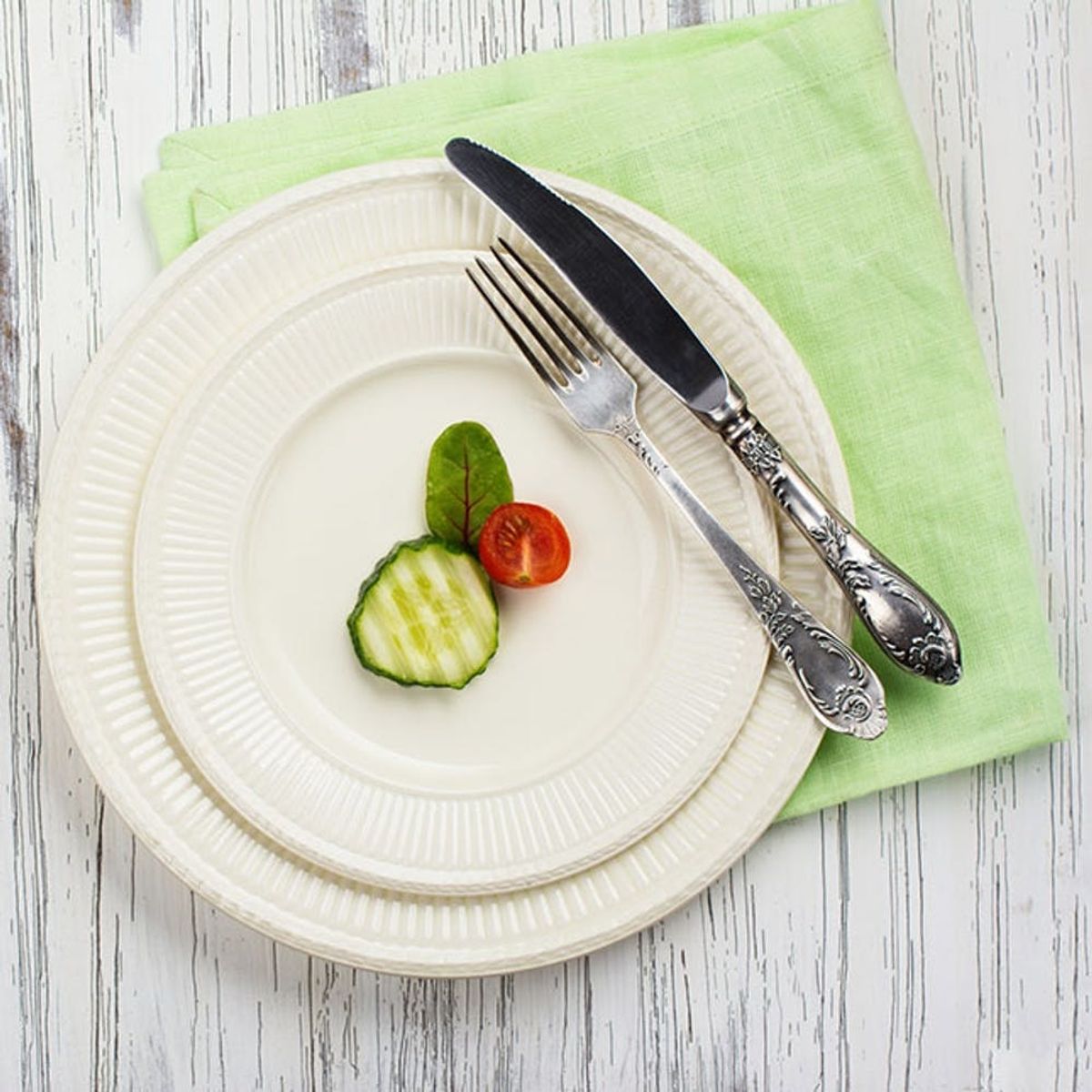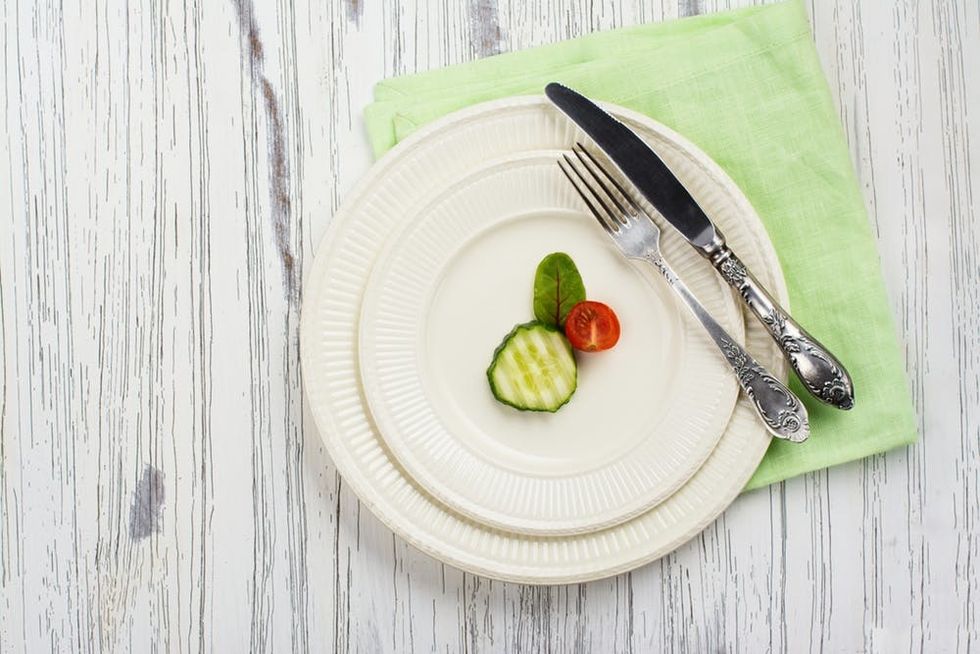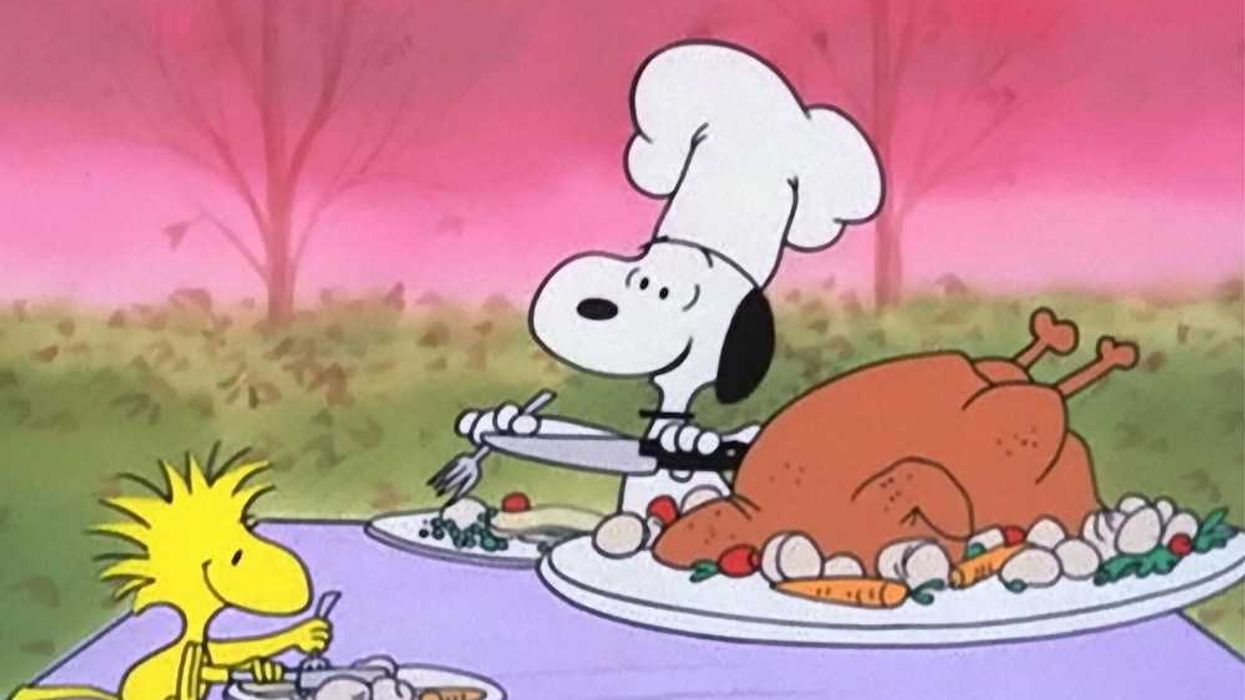There’s no such thing as a quick fix.
Never Fall for These 5 Common Diet Myths Again

You can hack your fashion, hair, and beauty routine, but when it comes to your body, balanced, healthy nutrition takes time, and there are no quick fixes for diet and weight loss. We’ve probably all been tempted by a so-called diet trick that promises a fast and easy route to the fit-back-in-your-jeans weight we’re told to strive for, but don’t be fooled! Here are five common weight-loss myths — and the actual science explaining why they won’t work.

1. Eating from a smaller plate tricks your brain into thinking it’s getting a bigger portion. This one relies on an optical illusion called the Delboeuf Illusion: If you draw two same-size circles inside two other circles, with one outside circle larger than the other, your brain will perceive the circle inside the smaller circle as larger. But a recent study has found that the Delboeuf Illusion won’t convince your brain it’s getting a bigger portion of food if you’re hungry. Megan Casper, MS, RDN, NYC-based dietitian and founder of website Nourished Bite, explains, “The illusion of a smaller plate only works if you’re not hungry. If you are hungry — let’s say on a diet — you’re better able to accurately assess portions.”
Instead of using illusions as a quick fix, focus on eating mindfully. Alyssa Lavy, MS, RD, CDN, owner of Alyssa Lavy Nutrition & Wellness LLC in Milford, CT, says, “Rather than ‘tricking’ your brain, it’s better to work on understanding portion sizes, chewing food properly, and being mindful of the taste and texture, which will all help you feel satisfied.” Eat from whatever plate you want; it’s how much you appreciate the food on it that makes you feel full.
2. Some foods contain negative calories. You’ve probably heard that foods that contain a lot of water — like cucumber and celery — are made up of “negative” calories. The theory goes that it takes more calories to digest them than they contain, thereby attaining the calorie deficit needed to lose weight. But that’s a misunderstanding of how calories work. Vanessa Rissetto, RD, a dietician in Hoboken, NJ who specializes in weight management and medical nutrition therapy, warns, “There is zero scientific evidence that anything has negative calories. A calorie isn’t actually a tangible thing, it’s a unit of measurement that tells us the amount of energy in the food we consume. The digestive process, and how much energy it takes to process and store food (known as the thermic effect of food), only accounts for about 10 percent of most caloric intake.” So don’t count calories; make every calorie count. Lavy advises, “Pairing nourishing foods together to create a balanced meal will likely do more for your health than estimating every calorie consumed and utilized.” Think less math, more nutrients.
3. Certain foods boost your metabolism so you burn more calories. Similarly, you may have heard that spicy or cold foods can speed up your metabolic rate so that you burn more calories in the same amount of time. There is some truth to this, but it’s not a particularly effective or healthy way to think about food. Brian Bender, PhD, Los Angeles-based nutritionist and founder of personalized diet tracker My Intake Pro, explains, “Your body heats up slightly as you digest food, and certain food groups alter this aspect of metabolism in different ways, albeit by a small amount. For example, protein increases this more than carbs or fat. However, this only accounts for around 10 percent of your total caloric expenditure throughout the day. The idea of eating certain foods to raise your metabolism as a strategy for weight loss is completely impractical, and will not lead to any measurable changes.”
4. Fasting is the most effective way to lose weight. If the key to losing weight is using more calories than you take in, reducing your calorie intake to little or nothing must be the most effective diet, right? Wrong! For starters, that type of quick weight loss is probably not the kind you want. “About 16 hours after you begin a fast or extreme diet, when your glycogen stores have run out, your body begins to break down muscle for energy, causing the body to lose water,” Casper cautions. “This water weight is typically the quick drop in weight people see with fasting.”
After that initial loss, it’s probably not going to be sustainable long-term. “If you’re judging the effectiveness only by the rate at which the weight is lost, then fasting comes out on top simply because this results in the fewest amount of ingested calories,” Bender explains. “However, this puts a lot of strain on the body, and since most people don’t want to sustain fasting for prolonged periods of time, it’s likely that you will regain the weight shortly thereafter.” It’s not just ineffective, it could be dangerous. According to Lisa Cohn, MMSc, MEd, RD, dietitian and president of Park Avenue Nutrition in NYC, “In the long run, repeated fasting can stress cardiac muscle, reduce muscle tissue, and reduce fitness, among other detriments.” Going hangry isn’t worth it.
5. Cleanses help your body detox. Juice cleanses that supposedly detoxify your body have become a celebrity fad, but you don’t need a magical juice diet to get rid of toxins: Your liver does it for you! “If you are a healthy individual with a functioning liver and set of kidneys, these naturally act as detoxifiers for our bodies. Any fast weight loss, including but not limited to that caused by a ‘cleanse,’ can rapidly release pollutants stored in adipose tissue (fat) into the bloodstream, the effect of which is unknown,” Lavy explains. “A better option would be to choose nutrient-dense foods, such as fruits and vegetables, and increase physical activity as you’re able, which will likely result in more gradual, sustainable weight loss, and larger improvements in overall health, compared to a so-called cleanse.”
Ultimately, these myths just don’t hold water — and the safest, most sustainable way to reach your ideal weight is by taking it slow and steady.
What are your strategies for healthy weight loss? Tell us all about it @BritandCo.
(Photo via Getty)













